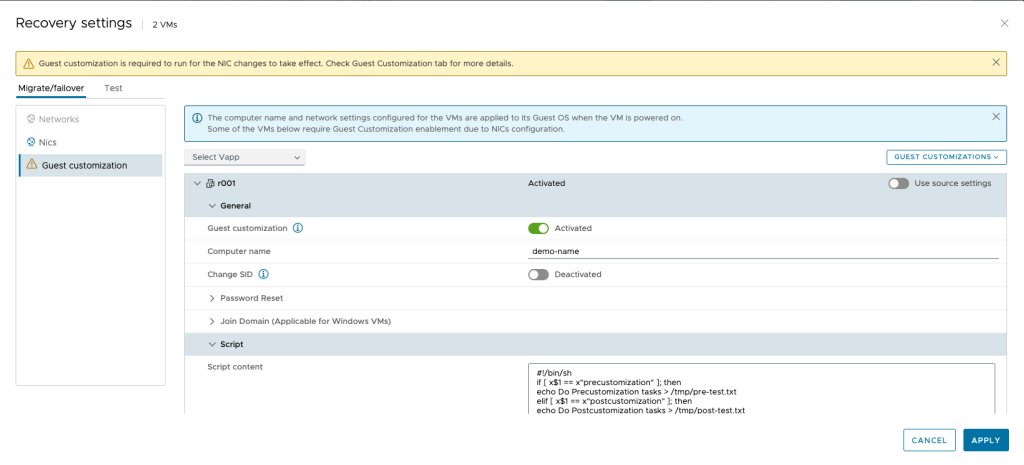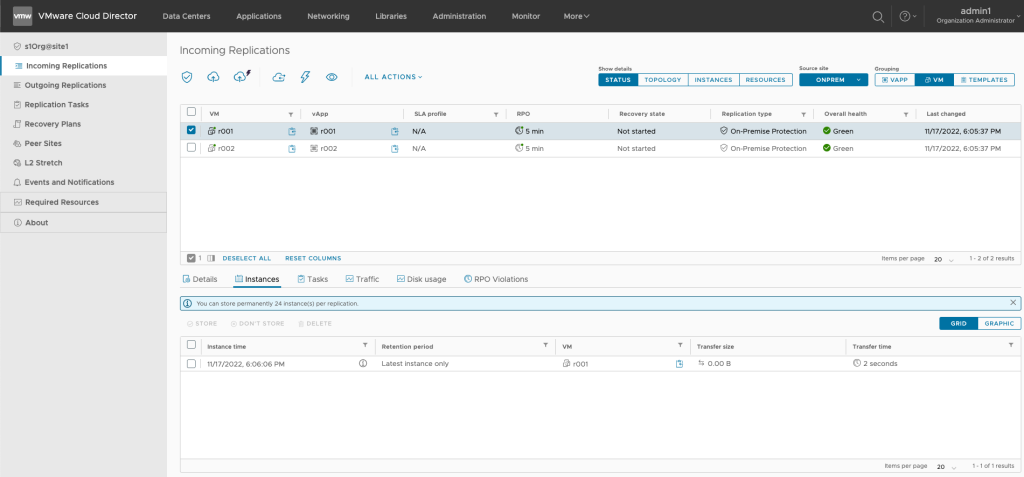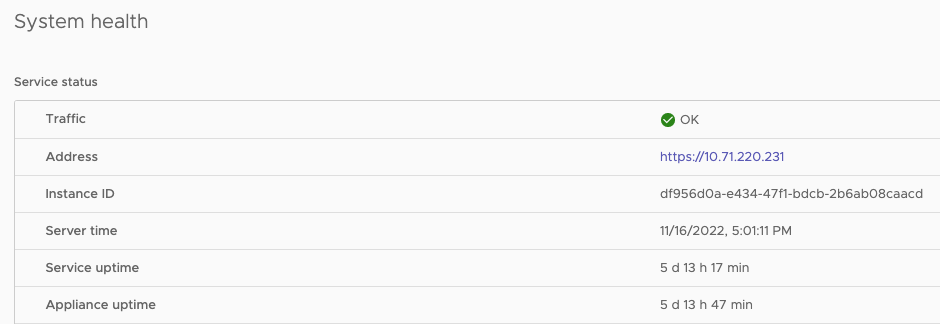Along with the already announced enhancements to vSphere DR and Migration and the set of Provider-oriented features, VMware Cloud Director Availability 4.5 also brings some more operational improvements.
Advanced Recovery Settings
One of the most exciting new features is the new recovery settings menu that offers a complete set of replication customizations based on the VMware Cloud Director Guest Customization settings.
In the past versions, users could only specify the network settings and the computer name. Now, all the available Guest Customization settings can be configured, such as changing the computer name or SID, resetting the administrator password, joining a domain, and even specifying a script to be executed on the recovered VM at the destination site for additional modifications. Setting the path to the script is not supported. Instead, the script code should be supplied.

Based on the Guest OS, the script should be a batch file for Windows virtual machines and a shell script for Unix virtual machines. Examples can be found in this KB.
There is also an option to use the source settings if the replication is performed between two VMware Cloud Director clouds. It preserves the Guest Customization properties of the source VM.
You can still define different settings for testing and failover/migration. There is also a copy button that you can use for copying the settings to the test tab instead of configuring them once again for the properties that you would like to be identical.

VM Sizing Policy Selection
In addition to the existing VM placement policy selection, in VMware Cloud Director Availability 4.5, a VM Sizing policy can be selected from the list of available ones during the replication configuration wizard.
The options to choose from are none for cases one should not be used, the default policy for the organization, or a specific one from the list of available policies.

Based on the VM Sizing policy, the recovered VM is allocated specific compute resources predefined by the Cloud Provider.
Role-Based Access Control
Another new thing that is introduced by VMware Cloud Director Availability 4.5 is Role-Based Access Control. There are two new roles available in VMware Cloud Director for the Organization Administrator to assign to the Organization users: View and Modify.
VCDA_MODIFY_RIGHT role grants administrative rights for all VMware Cloud Director Availability operations, similar to the Organization Administrator.
VCDA_READ_RIGHT role allows only viewing but not editing the incoming/outgoing replications, their recovery settings, the peer sites, etc.
To get started with the new roles, the System Administrator needs to create a new rights bundle that contains them and publish it to the relevant tenants.
Then, the Organization Administrator can create new roles based on these rights and assign them to users.

Please keep in mind that assigning both VCDA_MODIFY_RIGHT and VCDA_READ_RIGHT roles to a user will enable read-write access to VMware Cloud Director Availability for it. Assigning the Organization Administrator role in combination with VCDA_READ_RIGHT will result in the same.
This example shows the difference in viewing the Incoming Replications as a user with VCDA_MODIFY_RIGHT (or Organization Administrator) role and a user with VCDA_READ_RIGHT role.
VCDA_MODIFY_RIGHT:

VCDA_READ_RIGHT:

Such a view-only user can be utilized for monitoring or reviewing purposes without risking any changes to the replications and their settings. It might be practical for cloud providers who run a managed service on behalf of their tenants.
Service and Appliance Uptime
The System Health view also got enhanced with some new information about the uptime of each service and appliance. It is available for all cloud and on-premises appliances.

Remember, to get the latest updates, check this blog regularly, you also can find us on Slack, Facebook, Twitter, LinkedIn as well as many demo videos and enablement YouTube, especially our Feature Fridays series!




